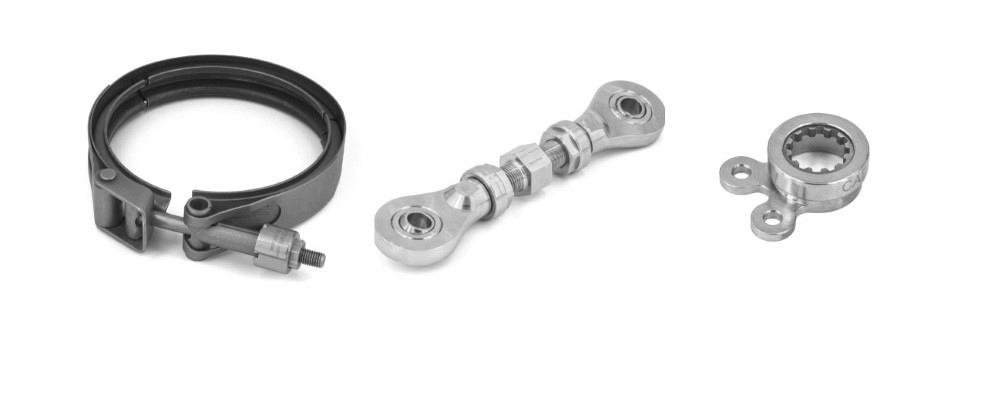- FMA
- The Fabricator
- FABTECH
- Canadian Metalworking
Our Publications
Categories
- Additive Manufacturing
- Aluminum Welding
- Arc Welding
- Assembly and Joining
- Automation and Robotics
- Bending and Forming
- Consumables
- Cutting and Weld Prep
- Electric Vehicles
- En Español
- Finishing
- Hydroforming
- Laser Cutting
- Laser Welding
- Machining
- Manufacturing Software
- Materials Handling
- Metals/Materials
- Oxyfuel Cutting
- Plasma Cutting
- Power Tools
- Punching and Other Holemaking
- Roll Forming
- Safety
- Sawing
- Shearing
- Shop Management
- Testing and Measuring
- Tube and Pipe Fabrication
- Tube and Pipe Production
- Waterjet Cutting
Industry Directory
Webcasts
Podcasts
FAB 40
Advertise
Subscribe
Account Login
Search
3D printing helps French manufacturer tighten lead times for locking fasteners
- January 25, 2022
- News Release
- Additive Manufacturing
JPB Système, a producer of self-locking fittings, plugs, and fasteners utilized by the aerospace, automotive, rail, marine, and nuclear industries, is conducting tests to gauge the feasibility of adding 3D printing to its mix of manufacturing operations.
The French company, which has offices in the U.S. and Poland, has been conducting trials with an industrial-grade metal binder-jet (MBJ) printer. The results of trials to produce flight-ready parts have been “extremely positive.” Binder jetting yields robust, lighter-weight components more quickly, easily, and cost-effectively than traditional manufacturing methods such as machining and casting, claims the company.
JPB also has found it can print highly complex products with new geometries, further streamlining production efficiencies by eliminating the need for assembly.
Casting Limitations
The company’s director of engineering, Jocelyn Vecchio, said, “Such production efficiencies are evident if we compare [binder jetting] to the typical method of producing parts via casting in a foundry.” Casting, besides having limitations in terms of geometries, he continued, “involves expensive tooling that can entail lead times of around six months—even longer if geometries change and a new mold is required. Using MBJ additive manufacturing, we could produce the same part in about four weeks. That’s a decrease in time of more than 80%.”
Plus, the parts’ hollow bodies and tough lattice structures allow JPB to match the durability of traditional metal variants while cutting part weight up to 30%.
“This is important for OEM customers and those further up the supply chain who are constantly seeking to reduce the overall weight of the aircraft,” said JPB Research Engineer Benjamin Sangouard. “A lighter aircraft means less fuel, which means less cost and reduced emissions, which is, of course, important from a sustainability perspective.”
AM’s on-demand nature also facilitates sustainability by allowing a manufacturer to produce what is needed when it is needed. For conventional manufacturing methods to be cost-efficient, a company must commit to long production runs, which means carrying large inventories. AM’s flexibility and ability to quickly produce just the parts needed minimizes inventory.
Design Freedom
Another benefit is the way in which AM enhances design freedom and eases the production of complex products. This includes building one element inside another and combining two or more parts into one—things that typically are not achievable with conventional manufacturing techniques.
As an example of the latter, the JPB team combined a three-component engine part that required assembly into a single structure. The reduced number of components simplified the supply chain, eliminated assembly time, and minimized the chances of a component damaging the engine.
For Vecchio, designing more advanced products with fewer components could also increases JPB Système’s strategic competitiveness. “So far, our exploration into the application possibilities of MBJ have proved very successful and offer significant potential in our quest to innovate our production processes to better meet the needs of our customers,” he said.
- Podcasting
- Podcast:
- The Fabricator Podcast
- Published:
- 04/16/2024
- Running Time:
- 63:29
In this episode of The Fabricator Podcast, Caleb Chamberlain, co-founder and CEO of OSH Cut, discusses his company’s...
- Trending Articles
- Industry Events
16th Annual Safety Conference
- April 30 - May 1, 2024
- Elgin,
Pipe and Tube Conference
- May 21 - 22, 2024
- Omaha, NE
World-Class Roll Forming Workshop
- June 5 - 6, 2024
- Louisville, KY
Advanced Laser Application Workshop
- June 25 - 27, 2024
- Novi, MI


























